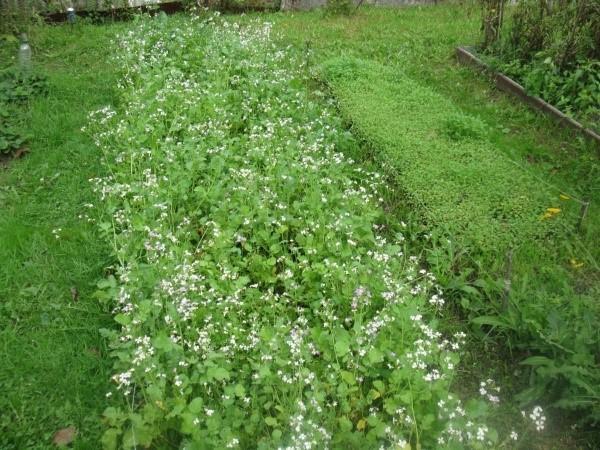Buckwheat as green manure: we fertilize the soil without chemicals
 It is no secret that the cultivated land eventually becomes poor in nutrients, which invariably affects the harvest. Fans of organic farming know that buckwheat, as a green manure, is an excellent tool for enriching and restoring soil. Due to the short growing season and powerful root system, it grows quickly and loosens the soil well. And after embedding in the soil, it will also replenish the reserves of minerals, especially nitrogen, phosphorus and potassium. What else is different about this green manure, and how to use it on a private plot?
It is no secret that the cultivated land eventually becomes poor in nutrients, which invariably affects the harvest. Fans of organic farming know that buckwheat, as a green manure, is an excellent tool for enriching and restoring soil. Due to the short growing season and powerful root system, it grows quickly and loosens the soil well. And after embedding in the soil, it will also replenish the reserves of minerals, especially nitrogen, phosphorus and potassium. What else is different about this green manure, and how to use it on a private plot?
Properties of buckwheat sown as green manure
As green manure, plants are used that quickly grow the aerial part, and buckwheat is one of them. It is especially suitable for enriching heavy soils. The dense structure of the soil does not interfere with the development of powerful seedlings, and long tap roots loosen it up to 0.5 m in depth.
Among the green manure, buckwheat has some advantages, which lie in its characteristic properties:
- rises quickly and fully ripens in just 2.5-3 months;
- grows in any soil, even on salt marshes;
- deeply loosens the ground due to the developed root system;
- enriches the lower soil layer with acids secreted by the roots;
- restores the microflora of the fertile layer, destroying microorganisms that cause plant diseases;
- protects the site from weeds due to the density of the planting and deep roots;
- helps to retain moisture and heat, prevents cracking;
- the plant part embedded in the soil enriches it with nitrogen and other microelements in the process of decay;
- serves as a honey plant, attracting bees to the site, which at the same time pollinate the garden.
Sowing buckwheat three times will help to get rid of the "unkillable" wheatgrass weed in just one season.
Despite the enormous benefits of buckwheat as a siderat, it also has some disadvantages that should be taken into account. So, this plant does not tolerate cold and drought. Buckwheat is not suitable for all crops as a predecessor. In addition, developed roots in the case of dense crops are often intertwined, making it difficult to further cultivate the site.
Buckwheat as green manure: when to plant and how to close up
To take advantage of the green manure properties of buckwheat, it can be sown from mid-May to mid-August. The seeding depth is no more than 3 cm on heavy soil, and up to 6 cm on black soil. You can plant it by simply scattering the kernels over the site, or in rows, leaving row spacings about 15 cm wide. It would also be nice to plant buckwheat in the garden between the trees. It does not dry out the soil, prevent rapid evaporation of moisture and attract pollinating insects.
The seeding rate depends on the purpose:
- to drown out weeds, you will need up to 15 g of seeds per 1 sq. m .;
- for embedding in soil for the purpose of enrichment, 6 g is enough.
For spring planting in hot dry summers, you will need to water the crops at least once a week. As soon as the buckwheat begins to bloom, it is the right time to harvest it. To do this, it is necessary to mow the aboveground part. By the way, it can be used for composting or simply spread between rows between garden crops. The roots themselves should be cut with a flat cutter to a depth of at least 10 cm. You can start planting garden crops two weeks after harvesting the green manure.Buckwheat sown in autumn is simply left on the site, and during the winter it will rot itself.